- Blog
- What is Gamification Marketing? A Comprehensive Guide for Marketers
What is Gamification Marketing? A Comprehensive Guide for Marketers
-
Nikolett Lorincz
- Marketing
- 6 min read
Table of Contents
As an ecommerce marketer, you need to create campaigns that stand out in the sea of online marketing noise.
The internet is filled with campaigns, content, offers, and deals. So you need something to set your brand apart. That’s exactly where gamification marketing shines.
By integrating gaming dynamics into your marketing strategy, you tap into a blend of motivation, competition, and achievement.
In this guide, we’ll talk about the concept of gamification marketing and share some best practices for developing your own successful interactive marketing strategy.
Let’s go!
What is gamification marketing?
Gamification marketing is a creative strategy that involves incorporating gaming mechanics into non-gaming contexts, such as websites and mobile apps.
This approach is about creating engaging, interactive marketing campaigns.
Introducing an element of fun allows you to attract and retain customers, fostering memorable experiences that enhance brand loyalty.
One popular example of gamification in marketing is the Starbucks Rewards program.
Starbucks rewards members with stars for each purchase they make, and as they accumulate stars, they progress through different reward tiers.
The program incorporates elements of competition and achievement by offering bonuses for reaching certain milestones, such as a free drink on your birthday or after earning a certain number of stars.
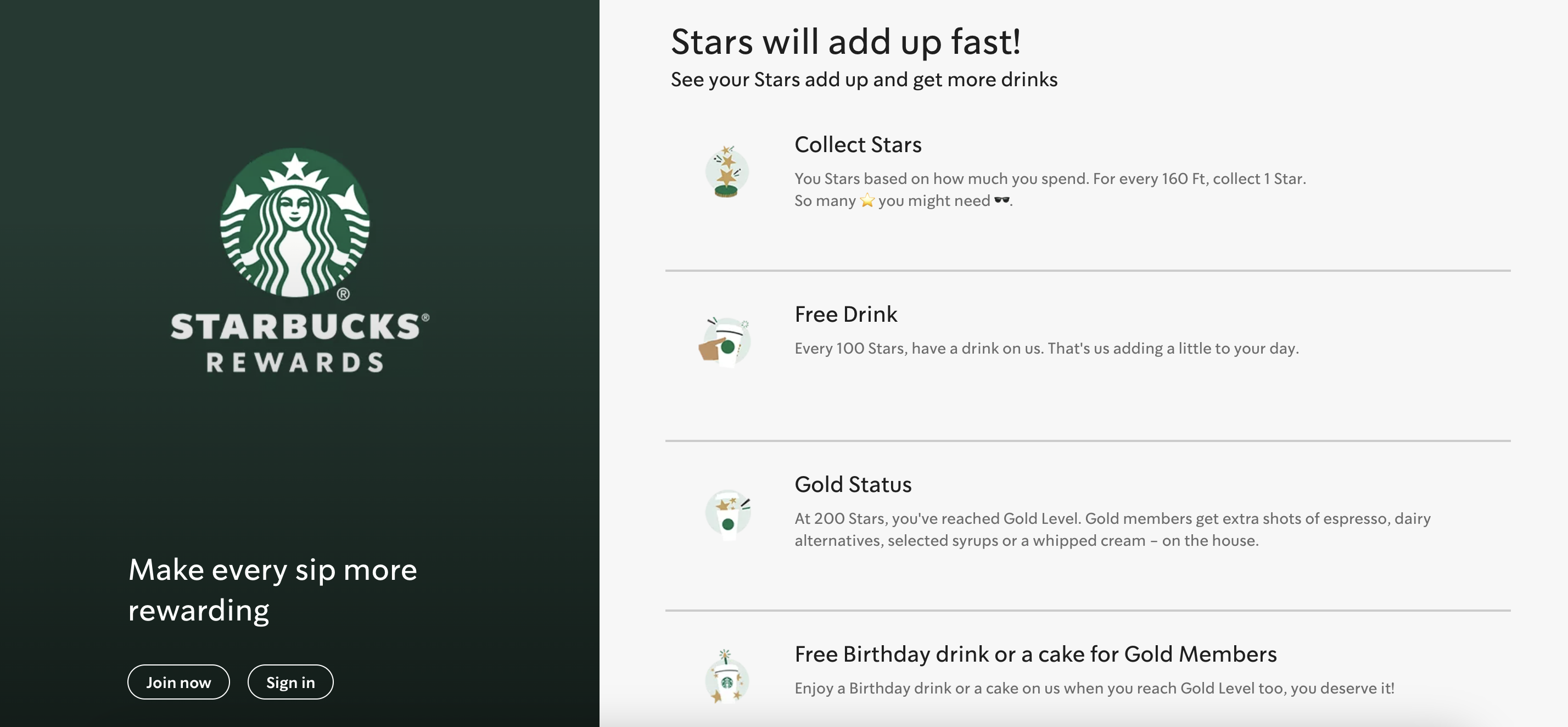
The psychology behind gamification
A deep understanding of human psychology is crucial for creating compelling gamified marketing strategies.
Gamification leverages intrinsic and extrinsic motivation, incentivizing users to participate in gamified activities through various strategies.
This can include the potential to win material prizes or gain special privileges.
The human brain’s dopamine reward system plays a big role: when users achieve goals or receive rewards, dopamine is released, promoting a continuous cycle of engagement.
Gamification also taps into the human desires for achievement and validation, with systems that recognize accomplishments (think: earning badges or leveling up).
How to implement a gamification marketing strategy?
Incorporating gamification into your digital marketing strategies requires careful planning and alignment with your brand’s existing goals, messaging, and core values.
Let’s see the exact steps you’ll need to take!
Step 1: Identify your target audience
First and foremost, understanding your target audience is crucial.
Analyze demographic data, behavioral patterns, and engagement metrics across your existing digital marketing channels.
Consider the following questions:
- What are your customers interested in?
- What motivates them, and what are their preferences?
- What incentives would entice your current customers?
Step 2: Decide how you’ll integrate gamification
Once you know your target audience, it’s time to decide what kind of gamification elements you’ll use.
Will you create a program for loyal customers, implement a lucky wheel campaign, or build an interactive game from scratch?
There are many options to choose from, and understanding your target audience will help you decide which one will most effectively increase audience engagement.
Step 3: Choose the right gamification platform
Next, you’ll need to select a gamification platform.
When evaluating platforms, here are a few things you should consider:
- Integration capabilities: Make sure the platform can be easily integrated with your existing marketing channels.
- Customization features: Look for platforms with extensive customization options to match your brand’s aesthetic and allow for personalized game mechanics.
- Analytics and reporting: The platform should offer robust analytics to track user engagement, progress, and other key performance indicators.
- User experience: The platform should provide a smooth, enjoyable user experience, with minimal loading times and an intuitive interface.
- Support and community: Consider the level of customer support provided and whether there’s an active community or forums for sharing ideas and solutions.
- Pricing: Cost is another important consideration when choosing a gamification platform. Find a balance between affordability and the features you want.
OptiMonk is an excellent option for marketing teams who want to create gamified popup campaigns such as lucky wheels, scratchcards, or pick-a-gift campaigns.
Step 4: Create your gamified campaign
Once you’ve selected your platform, it’s time to create your gamified campaign.
If you’re using OptiMonk, you can get started with one of our ready-to-use templates:
Step 5: Balance fun and functionality
Crafting a gamified marketing campaign that strikes the right balance between fun and functionality is essential.
The gaming elements should be engaging and enjoyable to maintain user interest while also serving a functional purpose that aligns with your marketing objectives.
Step 6: Track and measure success
It’s vital to track and measure success to optimize your gamification marketing campaign.
Use the analytics tools provided by your gamification platform to track participation rates, completion rates, and any direct impact on sales or lead generation.
Also, pay attention to user feedback and customer engagement levels to identify areas for improvement.
6 real-world examples of successful gamification marketing campaigns
Now let’s take a look at some real-world gamification examples that will help to inspire your own and increase customer loyalty!
1. London Lash’s scratchcard
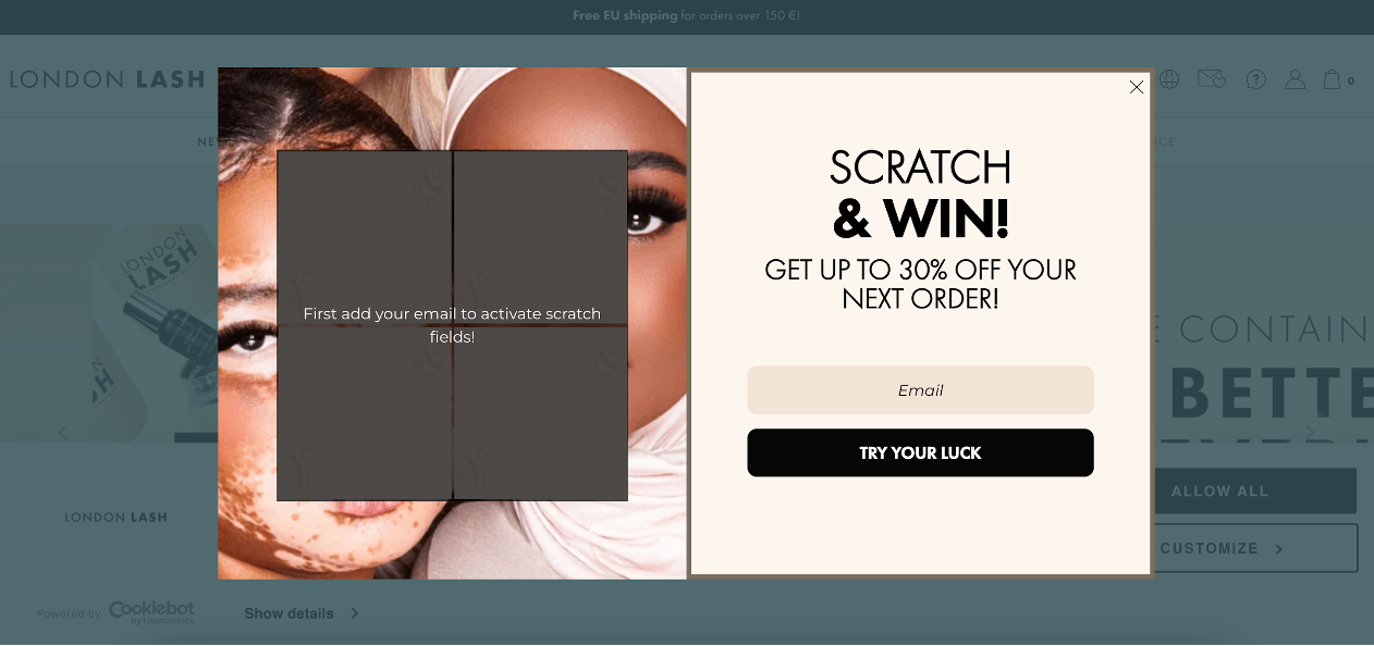
London Lash implemented a scratchcard popup as part of their gamification strategy.
Customers visiting their website were presented with a virtual scratchcard, enticing them to reveal hidden discounts or special offers.
This provided a fun experience for new customers while also helping them save money on their first purchase.
2. MotionGrey’s spin the wheel
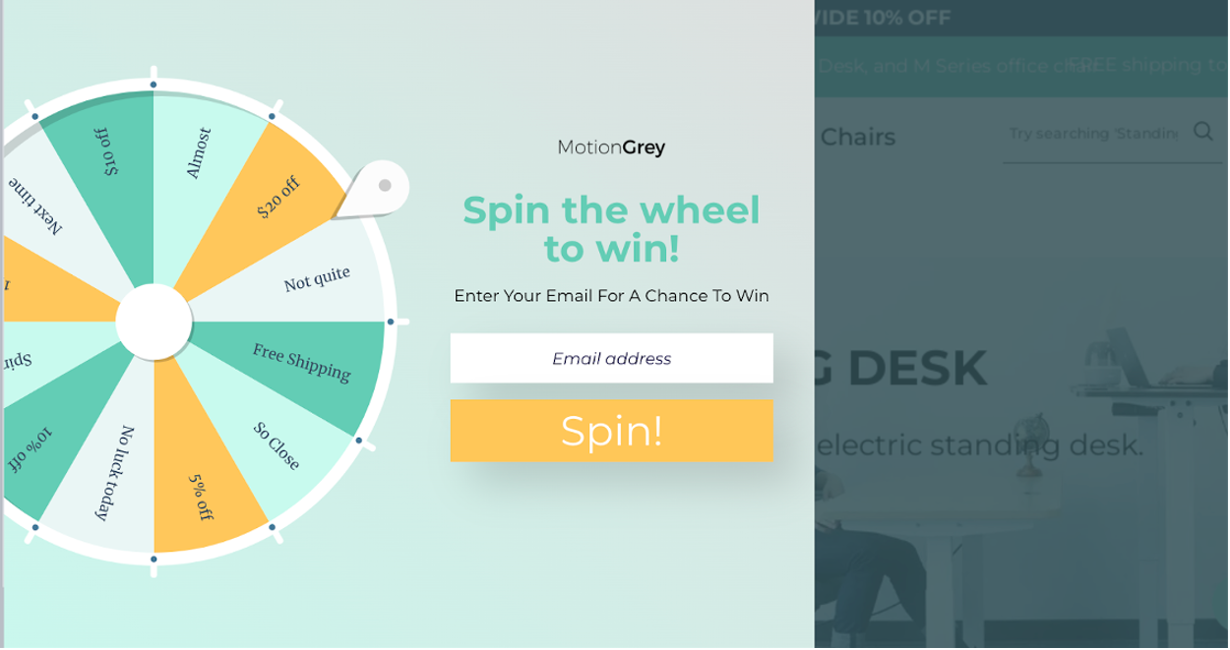
Another great example of a successful gamification campaign is MotionGrey’s lucky wheel popup.
Users were invited to spin a virtual wheel for a chance to win discounts, free shipping, or exclusive prizes.
This marketing campaign helped to increase engagement on their website while also growing their email subscriber list.
3. Allyoung’s pick a gift popup
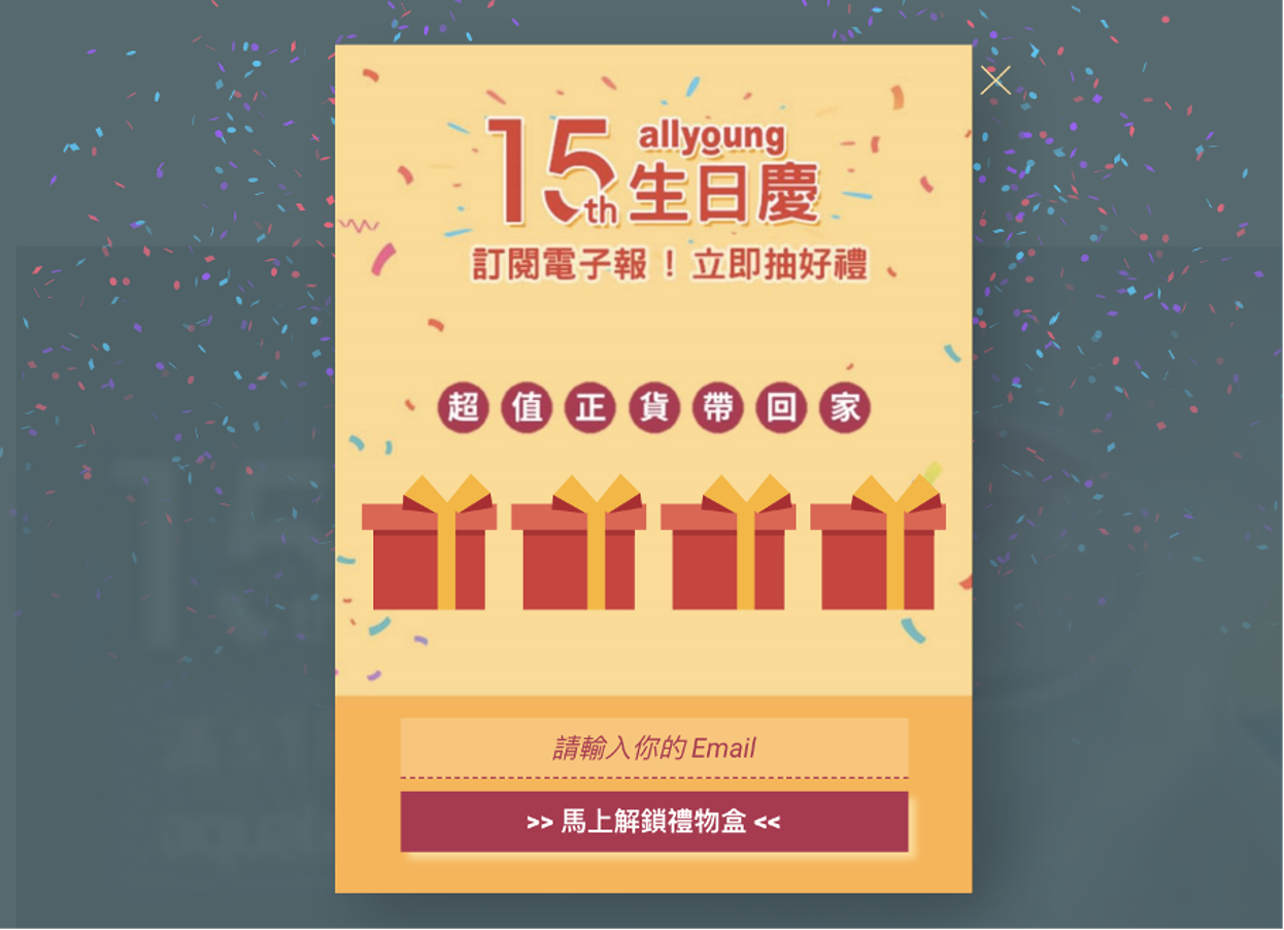
Allyoung incorporated a “pick-a-gift” popup into their website to gamify the shopping experience.
Customers were presented with a selection of virtual gifts and prompted to choose one upon making a purchase. This gamification technique helped Allyoung grow brand awareness.
4. Sephora’s rewards bazaar
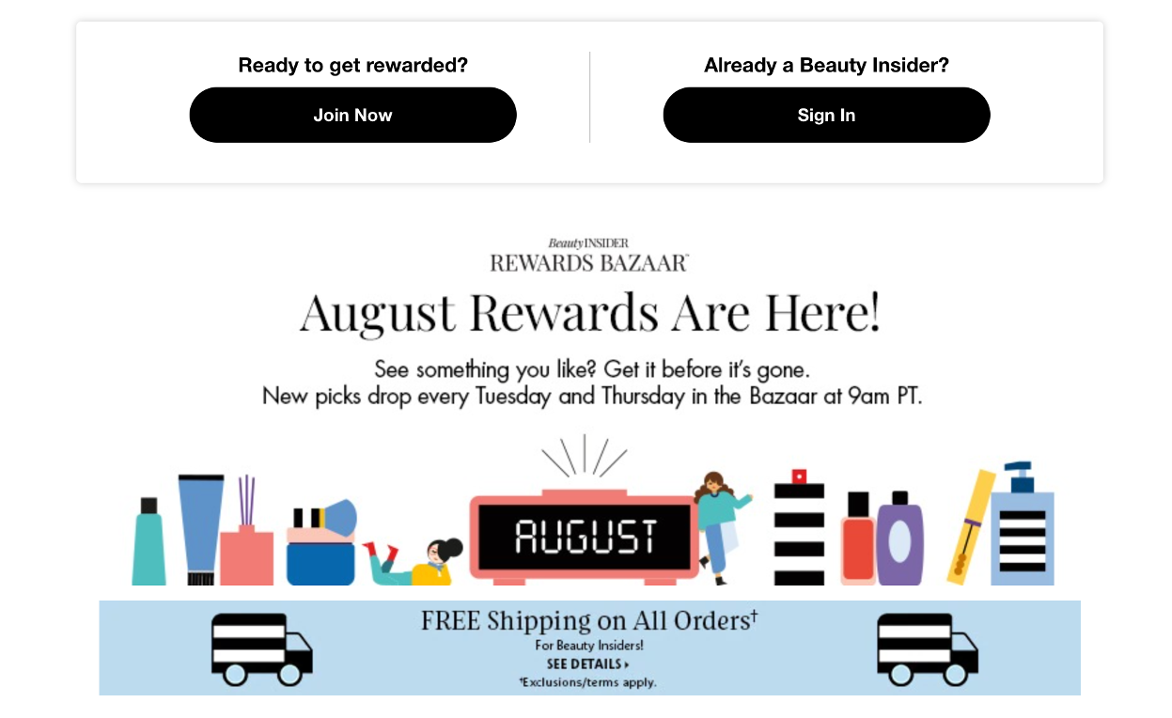
Sephora, a leading cosmetics retailer, implemented a “rewards bazaar” as part of their loyalty program.
Customers earned points for purchases, which they could redeem for various rewards including exclusive products, samples, and beauty services.
This gamified program not only incentivized repeat purchases but also fostered a sense of exclusivity and excitement among Sephora’s customer base.
5. Blume’s membership program
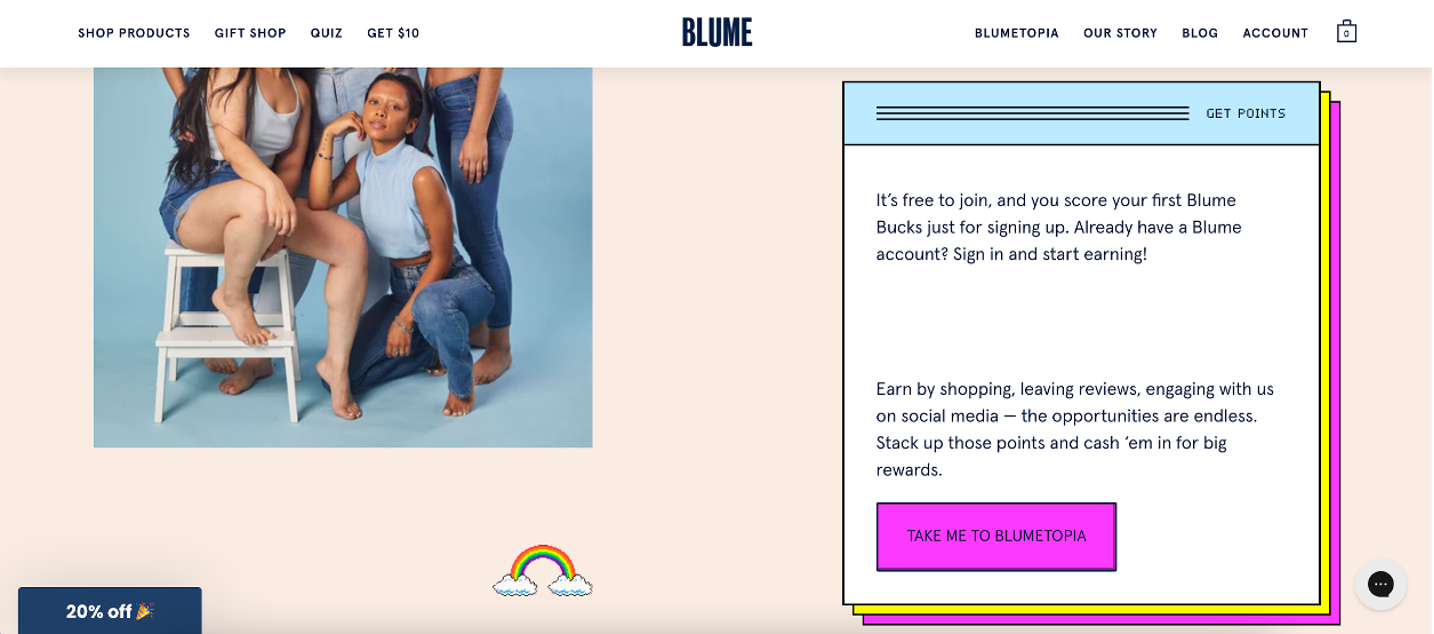
Blume also introduced a gamified loyalty program to reward customer engagement and advocacy.
In their case, customers earned points not only for purchases but also for actions such as referring friends, writing reviews, and participating in community challenges.
This helped to improve customer loyalty.
6. Ted Baker’s Hook Your SoleMate campaign
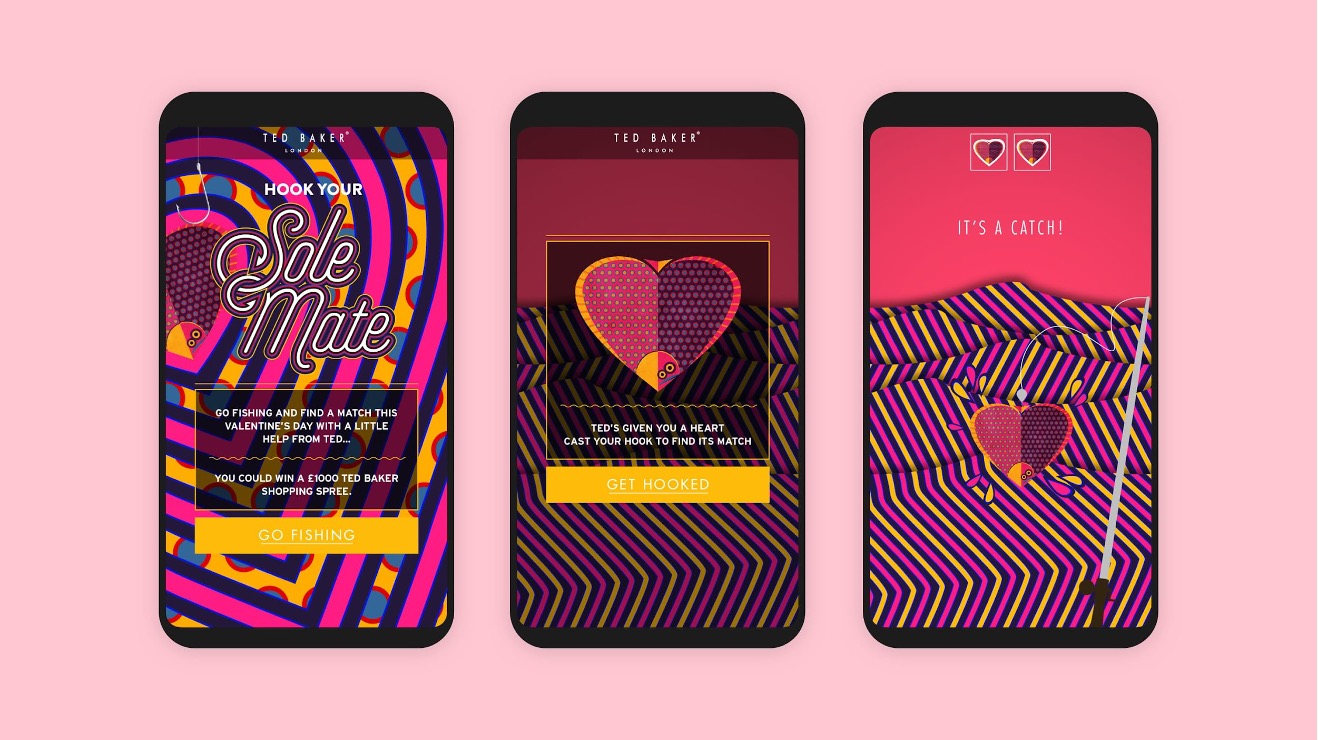
Ted Baker launched the “Hook Your SoleMate” campaign, which combined gamification with social media engagement.
Customers were invited to participate in a virtual fishing game on Ted Baker’s website, where they had a chance to “hook” the ultimate prize: a $1000 shopping spree.
Participants were encouraged to share their gameplay on social media. This resulted in increased brand engagement and brand awareness.
FAQ
Does gamification work in marketing?
Yes, gamification has been proven to improve user engagement, drive more conversions, and ultimately increase sales, making it an effective strategy in marketing. Many successful brands have experienced significant benefits from implementing gamification in their marketing efforts.
What are the disadvantages of gamification in digital marketing?
While gamification is a great way to increase engagement, it must be implemented thoughtfully. For example, poor design or overly complex game mechanics can easily frustrate users who prefer more straightforward interactions. Additionally, gamified marketing sometimes doesn’t have a strong strategic connection to a company’s overall goals.
What are the key components of gamification?
The key components of gamification include elements like points, badges, levels, challenges, and leaderboards. Gamified marketing strategies incentivize specific user behaviors by offering rewards, helping to achieve the brand’s goals while providing an entertaining, engaging experience for participants.
Wrapping up
Gamification is a powerful tool to help ecommerce stores increase user engagement and boost brand awareness.
By understanding its key components and the psychology behind it, you can create engaging and effective gamified campaigns.
Remember to align your gamified elements with your brand’s goals, messaging, and values, and to continuously adapt your strategies to stay relevant in the ever-evolving digital landscape.
Gamification techniques offer a unique opportunity for both seasoned digital marketers and newcomers to the digital world, so make sure to give it a try!
Migration has never been easier
We made switching a no-brainer with our free, white-glove onboarding service so you can get started in the blink of an eye.

What should you do next?
Thanks for reading till the end. Here are 4 ways we can help you grow your business:
Boost conversions with proven use cases
Explore our Use Case Library, filled with actionable personalization examples and step-by-step guides to unlock your website's full potential. Check out Use Case Library
Create a free OptiMonk account
Create a free OptiMonk account and easily get started with popups and conversion rate optimization. Get OptiMonk free
Get advice from a CRO expert
Schedule a personalized discovery call with one of our experts to explore how OptiMonk can help you grow your business. Book a demo
Join our weekly newsletter
Real CRO insights & marketing tips. No fluff. Straight to your inbox. Subscribe now
Nikolett Lorincz
- Posted in
- Marketing
Partner with us
- © OptiMonk. All rights reserved!
- Terms of Use
- Privacy Policy
- Cookie Policy
Product updates: January Release 2025








